Disclosure: This article contains affiliate links. We may earn a commission from purchases at no extra cost to you, which helps our travel content.
When one spends as much time navigating the sleek corridors of Silicon Valley and the neon-lit streets of Tokyo as I do, there comes a moment when the soul craves something fundamentally different—something raw, authentic, and profoundly human. This is what led me, quite unexpectedly, to Utqiagvik (formerly known as Barrow), Alaska, the northernmost settlement in the United States, positioned well beyond the Arctic Circle. As a social worker turned tech consultant, I've developed a particular sensitivity to cultural narratives and human resilience. The Iñupiat people of Alaska's North Slope have sustained their remarkable way of life for over 1,500 years in one of Earth's most unforgiving environments. This isn't your typical luxury getaway—it's something far more valuable: an immersion into a worldview that challenges everything we take for granted in our hyperconnected modern existence.
Preparing for the Edge of America
The journey to Barrow demands meticulous preparation, both physical and mental. Flying into this remote outpost requires at least two connections from most major cities, typically through Anchorage and then Fairbanks. I booked my accommodations at the Top of the World Hotel, which, while not offering the amenities of a Four Seasons, provides comfortable rooms and authentic local hospitality that feels genuinely luxurious in this context.
Despite visiting in summer, I quickly learned that 'summer' in the Arctic means something entirely different than it does in Henderson or Marseille. Temperatures hover between 3-12°C (38-54°F), with the possibility of snow even in July. My Arc'teryx Cerium LT Down Jacket became my constant companion—lightweight enough to pack easily yet providing crucial warmth during unexpected cold snaps and midnight (yet fully sunlit) walks along the Arctic Ocean.
Perhaps most importantly, I had to prepare my expectations. Barrow isn't a destination with a tourism infrastructure designed to cater to your every whim. Its luxury lies in access to experiences and perspectives most travelers will never encounter. The town's remoteness means everything—from fresh produce to basic supplies—must be flown in at considerable expense. This reality shapes both the local economy and cultural practices in fascinating ways that became increasingly apparent throughout my stay.

💡 Pro Tips
- Book accommodations 3-6 months in advance as options are extremely limited
- Pack multiple layers regardless of season—Arctic weather can change dramatically within hours
- Bring sufficient cash as ATMs are scarce and connectivity issues can affect card payments
Cultural Immersion Through the Iñupiat Heritage Center
The Iñupiat Heritage Center stands as the cultural heart of Barrow and should be your first destination upon arrival. More than a museum, it functions as a living repository of knowledge and practices that have sustained this remarkable community for millennia. I spent an entire day here, beginning with a formal tour and gradually forming connections with the staff who shared insights no guidebook could provide.
The center houses magnificent examples of traditional art, hunting implements, and ceremonial objects, each with stories that connect past to present. What struck me most powerfully was how the Iñupiat view these items not as static artifacts but as evolving tools in an unbroken cultural tradition. When elder carvers demonstrated traditional ivory and baleen carving techniques, I was mesmerized not just by their technical skill but by how they spoke about their work—as a conversation with ancestors rather than a preservation of the past.
For visitors seeking deeper engagement, the center offers workshops in traditional crafts. I participated in a half-day session learning basic scrimshaw techniques on baleen (whale cartilage)—a challenging but profoundly rewarding experience. My modest creation now sits on my desk in Henderson, a daily reminder of how knowledge passes through hands and hearts rather than merely through books or digital archives.
Before leaving, I purchased several pieces from local artisans at the center's gift shop. These aren't mere souvenirs but investments in cultural continuity, directly supporting families who maintain traditional practices alongside modern lives.
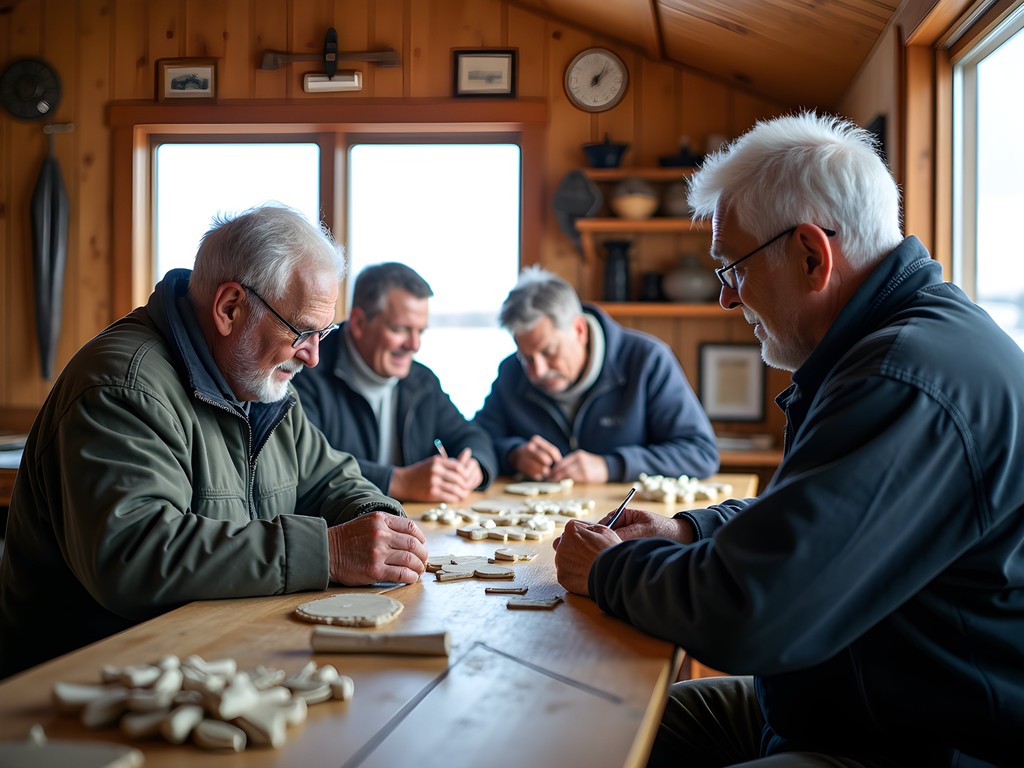
💡 Pro Tips
- Schedule at least 3-4 hours for your visit to fully appreciate the exhibits and connect with staff
- Check the workshop schedule in advance and book participation at least a week ahead
- Ask permission before photographing people or cultural demonstrations
The Nalukataq Festival: Witnessing Cultural Celebration
If you can time your visit to coincide with the Nalukataq Festival (typically held in late June), you'll witness the most significant cultural celebration in the Iñupiat calendar. This whaling festival celebrates successful spring hunts and embodies the community's deep connection to the bowhead whale—a relationship that has sustained life here for centuries.
I was fortunate to attend on the recommendation of a local contact I'd met through my work with mental health platforms. As an outsider, I approached with appropriate reverence, understanding that this was not a performance for tourists but a genuine cultural ceremony to which visitors are welcomed with characteristic Iñupiat hospitality.
The festival centers around the distribution of maktak (whale blubber and skin) and other traditional foods, followed by drumming, dancing, and the festival's namesake activity—the blanket toss. In this remarkable tradition, participants are launched high into the air from a blanket made of seal skins, originally serving as a hunting technique to spot distant game but now a celebration of community strength and cooperation.
To document these once-in-a-lifetime moments, I relied on my Sony Alpha a7 III with a versatile zoom lens. The camera's exceptional low-light performance proved invaluable during evening celebrations, while its unobtrusive size allowed me to photograph respectfully without disrupting the authentic atmosphere.
The festival provided rare opportunities to engage with community members over shared meals. These conversations—about climate change, cultural preservation, and the balance between tradition and modernity—were perhaps the most valuable souvenirs I brought home.

💡 Pro Tips
- Confirm festival dates before planning your trip as they depend on the spring whaling season
- Bring appropriate gifts if invited to share meals—quality coffee or tea is always appreciated
- Dress warmly even for 'summer' festivals as temperatures drop significantly in the evening
Arctic Gastronomy: Beyond Survival Food
The culinary traditions of the North Slope represent one of the world's most distinctive food cultures—born of necessity in an environment where traditional agriculture is impossible. For the luxury traveler accustomed to Michelin-starred experiences, Barrow's food scene requires a paradigm shift: here, luxury means freshness, cultural significance, and dishes you simply cannot experience elsewhere.
Through arrangements made by my hotel, I participated in a private traditional foods tasting led by an Iñupiat elder. This immersive dining experience included raw frozen caribou (quaq), bowhead whale meat and blubber (maktak), and various preparations of locally harvested fish. Each dish came with stories explaining its historical importance and harvesting techniques that have been refined over countless generations.
While some preparations challenged my French-influenced palate, others—particularly the Arctic char prepared with wild herbs—were genuinely delicious by any culinary standard. The experience deepened my appreciation for how indigenous foodways represent sophisticated adaptations to extreme environments rather than mere subsistence.
For those seeking more familiar fare, Barrow's restaurants offer surprisingly good options given the logistical challenges. Osaka Restaurant serves reliable Japanese-American cuisine, while Arctic Pizza has become something of a local institution. I found myself drawn repeatedly to Northern Lights Restaurant, where local ingredients are incorporated into recognizable dishes—their reindeer stew was particularly memorable.
To capture the vivid colors and textures of these unique foods, I used my iPhone 13 Pro with its excellent macro capabilities, allowing me to document these culinary experiences without disrupting the intimate atmosphere of shared meals.

💡 Pro Tips
- Approach unfamiliar foods with an open mind—traditional preparations represent centuries of cultural wisdom
- Request traditional food experiences through your accommodation as these aren't typically available in restaurants
- Bring high-quality chocolate or coffee as appreciation gifts when invited to private meals
Sustainable Arctic Tourism and Cultural Exchange
As both a social worker and frequent traveler, I'm acutely conscious of tourism's potential impacts on vulnerable communities. Barrow presents a fascinating case study in how remote indigenous communities can engage with tourism on their own terms while protecting cultural integrity.
During my week in Barrow, I participated in a guided tundra ecology walk led by an Iñupiat conservation officer. Beyond identifying the remarkably adapted plant species that thrive in this harsh environment, our conversation turned to climate change—which is happening here at twice the global average rate. The permafrost that has shaped local architecture, hunting practices, and cultural traditions is literally melting beneath the community's feet.
This reality underscores the importance of responsible tourism practices. I was impressed by local initiatives that ensure tourism dollars directly benefit community members rather than outside operators. The Tuzzy Consortium Library offers cultural orientation sessions for visitors that establish clear expectations about photography, appropriate questions, and community protocols.
For those seeking to document their journey comprehensively, I recommend the DJI Mini 3 Pro, which allowed me to capture the remarkable geography of the area while respecting local guidelines about drone usage. The drone's compact size made it practical to transport even with the strict luggage limitations on small aircraft serving Barrow.
The most meaningful experiences came through formal cultural exchange programs arranged through the North Slope Borough. These structured interactions ensure visitors gain authentic insights while community members maintain control over how their culture is presented and interpreted. The result is mutually beneficial—visitors receive genuine education rather than performance, while the community receives direct economic benefits that support cultural preservation efforts.

💡 Pro Tips
- Contact the North Slope Borough Department of Tourism at least one month before arrival to arrange cultural exchange opportunities
- Always ask permission before photographing people, homes, or cultural activities
- Consider leaving extra room in your luggage for local art purchases that directly support the community
Final Thoughts
As my small plane lifted off from Barrow's airstrip, banking over the endless Arctic Ocean still dotted with summer ice floes, I reflected on how profoundly this week had shifted my perspective. In my regular travels between tech hubs and global cities, luxury often means isolation—private lounges, executive floors, and the comfortable bubble of cosmopolitan sameness. In Barrow, I discovered a different kind of privilege: authentic human connection across profound cultural differences. The Iñupiat have thrived for millennia by prioritizing community resilience over individual comfort—a philosophy with surprising relevance to our hyperconnected yet increasingly isolated modern lives. If you're seeking a luxury experience that enriches rather than merely indulges, consider venturing beyond the Arctic Circle. The journey challenges conventional notions of comfort but rewards with something far more valuable: a renewed appreciation for human adaptability and the profound wisdom embedded in indigenous knowledge systems.
✨ Key Takeaways
- Cultural immersion in Iñupiat traditions offers perspective-shifting insights impossible to gain in conventional luxury destinations
- Proper preparation and respect for community protocols creates opportunities for genuine cultural exchange rather than superficial tourism
- The Arctic summer's midnight sun creates unique photographic opportunities and disrupts conventional notions of time
- Supporting indigenous artists and local businesses directly contributes to cultural preservation efforts
📋 Practical Information
Best Time to Visit
June-August (summer)
Budget Estimate
$6,000-$8,000 per person for one week
Recommended Duration
5-7 days
Difficulty Level
Challenging

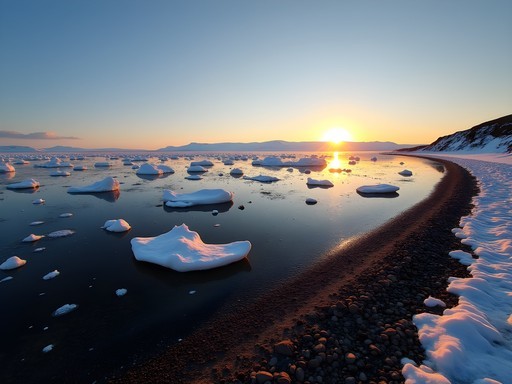
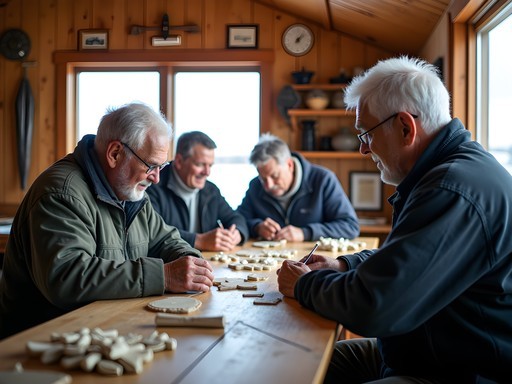
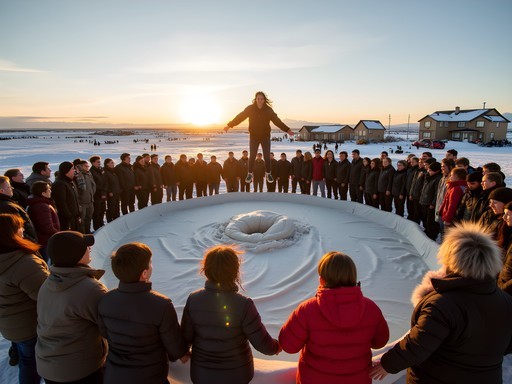
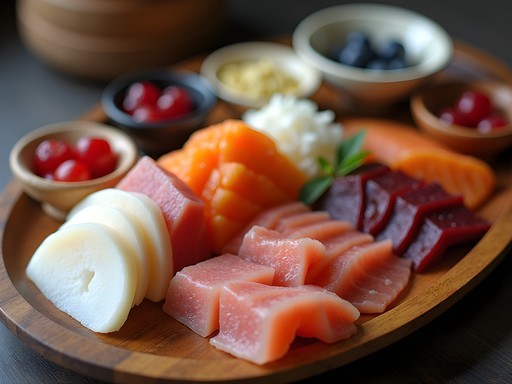
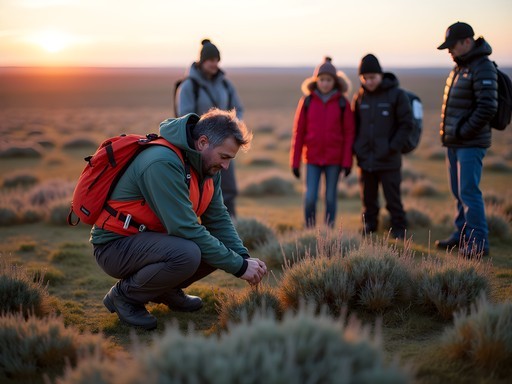


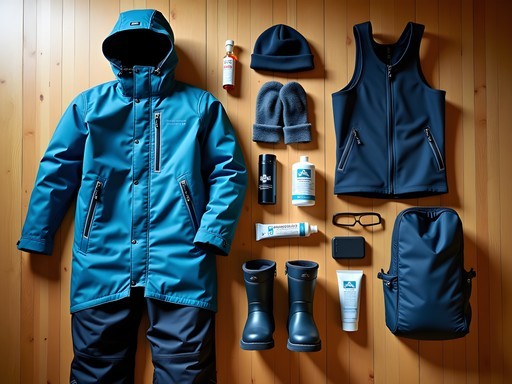






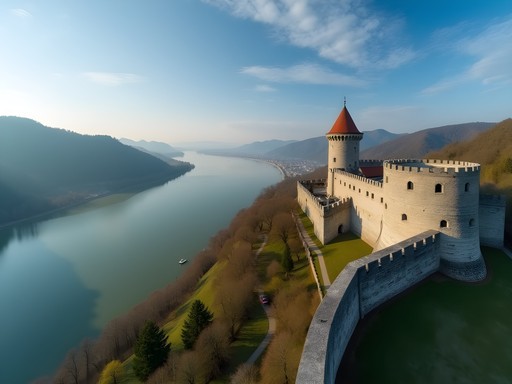
Comments
Haley Hamilton
What a beautifully written piece on Barrow! I backpacked through Alaska last summer and made it up to Utqiagvik (still getting used to using the traditional name). The juxtaposition of ancient traditions with modern life there is fascinating. I spent an afternoon with a local family who took me ice fishing, and despite it being June, we were bundled up on the ice! Gary, did you get a chance to visit the northernmost point marker? That wind coming off the Arctic Ocean is something else. For anyone planning to visit, I'd recommend connecting with the visitor center ahead of time - they can arrange cultural experiences that aren't advertised online. The stories I heard about climate change impacts from elders there were eye-opening and heartbreaking.
Gary Thomas
Thanks Haley! Yes, I did make it to the northernmost point marker - quite surreal standing there looking out at nothing but Arctic Ocean. Great tip about the visitor center connections, those personal introductions make all the difference.
Bryce Diaz
Gary, this brought back memories of my trip to Barrow in 2023! I was there during winter though - a completely different experience with the polar night. The community was incredibly welcoming despite the harsh conditions. I spent an afternoon with an elder who taught me how they navigate using stars and wind patterns. One tip for anyone heading there in winter: my extreme weather gear was worth every penny. Even the locals were impressed that I came prepared! The cultural resilience in such an extreme environment is something that stays with you long after leaving.
sunsetguide
Your post makes me want to visit! I've never been anywhere near the Arctic Circle. The Nalukataq Festival sounds incredible - I love experiencing authentic cultural celebrations when traveling. Did you feel welcome as an outsider during the festivities? I sometimes worry about intruding on important cultural events.
globeace623
How did you actually get to Barrow? Is there only one airline that flies there?
Gary Thomas
Alaska Airlines is the main carrier, with flights from Anchorage. Book early - they fill up quickly, especially during festival times!
wintermaster5608
Those ice floes in your last photo are stunning! Arctic light hits different.
summervibes
Fascinating post! I'm curious about the timing of your visit - was June good for experiencing both the cultural aspects and the unique Arctic environment? Would you recommend a different month?
beachguide1563
This looks amazing! How expensive was accommodation in Barrow? I've heard it's pretty pricey since everything has to be flown in.
Gary Thomas
You heard right! I paid around $250/night at the Top of the World Hotel, which is pretty standard there. Everything is expensive - a basic burger and fries ran me about $25. Budget accordingly if you're planning a trip!
greenpro
Just got back from Barrow last month! Your post really captures the essence of the place. The Iñupiat Heritage Center was definitely a highlight for me too - those whalebone carvings are incredible. Did you get to try muktuk? I couldn't bring myself to do it, but the locals were so proud of their traditional foods. The midnight sun messed with my sleep schedule for days after I got back home!
wintermaster5608
Muktuk is definitely an acquired taste! Tried it on my third visit and still not sure about it lol
Gary Thomas
Thanks for sharing, greenpro! Yes, I did try muktuk - quite the textural experience. I found the rendered whale blubber (akutuq) mixed with berries much more approachable. Did you catch any community dancing while you were there?
Hunter Thompson
MATE! This post is exactly what I needed! I've been planning an Alaska trip for ages but kept sticking to the usual spots. Barrow wasn't even on my radar until now! Your section on the Heritage Center sold me completely - those traditional hunting techniques and tools sound fascinating. Did you find language to be any barrier when interacting with elders in the community? I'm heading to Alaska next month and thinking of extending my trip to include Barrow now. Any hostels or budget accommodation you'd recommend for a backpacker? Your Arctic gastronomy section had me both intrigued and slightly terrified haha!
Gary Thomas
Hunter - most people speak English, so language isn't a huge barrier. For budget accommodation, options are limited and nothing is truly 'cheap' this far north. Top of the World Hotel is mid-range. There are a few homestay options if you book well in advance. And definitely try the food - it's part of the experience!
Hunter Thompson
Cheers for that, Gary! Will look into the homestay options - sounds like a more authentic experience anyway. Can't wait!
mountainninja6864
Those festival photos are amazing! The blanket toss looks terrifying but fun!
Venture X
Premium card with 2X miles, $300 travel credit, Priority Pass